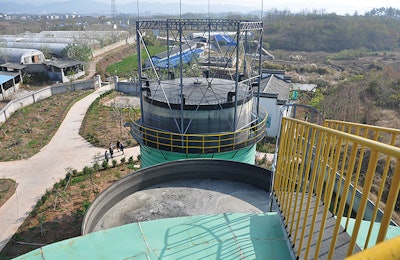
The Chinese government wants to increase the scale of pig farms throughout the country by implementing subsidy policies to support large, live pig farmers. Furthermore, the efforts in environmental protection are increasing, as China’s cities suffered heavy pollution in 2016. As a result, the deadline for farmers to move out of the forbidden areas in urban regions in China will be in 2017.
Market intelligence firm CCM has analyzed the main factors driving the live pig industry in China in 2017, which is the third largest pig exporting nation in the world with an export value of USD483,354,000 in 2015, following only the Netherlands and Denmark.
Forbidden farmland
The deadline for farmers to remove live pig farms from the forbidden farming areas in China, mostly located in the urban southern regions of China as well as along the coastal line, will be reached by the end of 2017. This indicates that all remaining farms in the area by this time will be demolished by the Chinese government.
The concept of forbidden areas for China’s live pig farming was first implemented in the Law of Environmental Protection of the People’s Republic of China in 2015 and seeks to focus China’s live pig farms into several large-scale farms instead of countless small and inefficient ones. This policy is supporting China’s environmental protection efforts, as most of the small farmers could not raise the money to effectively take care of the pollution they caused. The main focus of the developing areas lays in the northeast and the southwest of China; the huge western area of the country is considered as a moderate developing area for the pig industry.
More large-scale farms will ease the control of the pig supply and therefore stabilize the market trend and price development.
Another problem of the traditional pig industry in China, marked by a large number of small individual live pig farms, was the difficulty in coordinating and controlling those farms — the typical fluctuation in supply and price of live pigs in China occurred. The concentration of more large-scale farms will ease the control of the pig supply and therefore stabilize the market trend and price development.
To support large-scale farming, China has implemented a subsidy depending on the number of pigs.
Additional subsidies
Further measures are implemented to develop the live pig farming in China more and try to increase the lacking efficiency. One of these new measurements is subsidies and compensations for animal epidemic prevention. This includes three types of subsidies, which support farmers in keeping the health of their livestock and reduce the damage occurred by diseases.
- Free-of-charge vaccines for highly pathogenic avian influenza, foot and mouth disease, etc.; culling of animals due to major animal epidemic diseases will get compensation for losses
- The central government and local financial departments will offer a subsidy of USD11.63/head (RMB80/head) for safe disposal of dead pigs
- Losses of diseased pigs at the slaughter stage will get a subsidy of USD116.28/head
Furthermore, there will be rewards for live pig farming in counties. To be more specific, no less than USD145,350 of rewards will be granted for newly built and reconstructed large-scale pigsties in each county. The subsidy standard in some regions, according to CCM, is as follows:
- New built pigsty (USD5.81/m3)
- New built biogas digester (USD21.8/m3)
- Introducing improved sow (USD58.14-87.21/head)
Insurance policies for live pig farming
Adult sow insurance, fattening pig insurance and live pig price index insurance are included in policy-oriented agricultural insurance. This will help insured farmers to save some losses when suffering pig diseases, natural disasters and market fluctuations. For instance, insured farmers can obtain an insurance amount of USD145.35/head for a dead adult sow after paying a premium of USD8.72/head. Notably, the government will pay USD6.98/head for the premium, so farmers themselves only have to pay USD1.74.
In addition to the bespoke subsidies, there are additional subsidies for improved varieties, feed and livestock facilities. All of them aim to reduce environmental pollution, increase the scale of livestock and poultry farming and stabilize the live pig market in China. Beneficial for farmers, these subsidies can surely increase their incomes. According to CCM, in the future, individual farms and farming companies will gradually exit the market.
Learn more: Obstacles in Asia impact world feed production
What’s more, Fujian Province already announced concrete measurements for its live pig farmers. On March 9, 2017, Nan’an City, a major city in the province, issued the Action Plan of Specific Rectification of Live Pig Farming Pollution, according to which the city should finish demolition work of live pig farms located in forbidden areas, and complete transformation of 173 large-scale live pig farms to be retained.
Notably, live pig farms with 500 to 1,500 heads of pigs in non-forbidden areas, which passed environmental protection check and meet emission standard before the end of 2018, will get a USD43,610 reward. Those that passed the environmental protection check before the end of 2017 will get another USD1,450.
Related to China’s restructuring of its pig farming, the imports of pork are expected to soar to a record high in 2017. While the demand for pork is still rising for the Chinese population, this trend opens opportunities for foreign exporters to fill the gap of the live pig supply in China during the restructuring period.

















